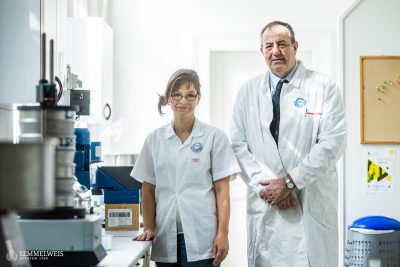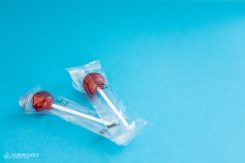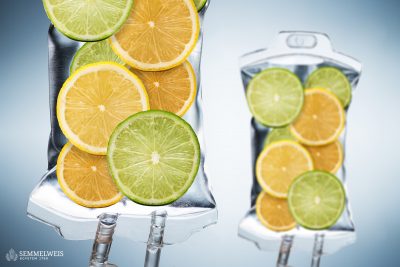One of the most stressful family situations is when children fall ill and need to be treated with medication. Feverish, coughing kids, meltdowns around administration time, frustration – all too familiar for parents! Small kids can struggle with swallowing solid and large tablets – and because of the choking hazard, there has been a plethora of liquid-form medications coming to the market in the last few decades. Pharmaceutical companies continuously try to come up with innovative solutions which are not only safe but suitable for youngsters – and the elderly as they can also be affected by swallowing difficulties (dysphagia).
But how far have pharmaceutical innovations stretched and what does the future hold in this field? Here are six forthcoming trends.
1. Medical drinking straws
 A medical drinking straw filled with lactase enzyme has been compounded and tested by researchers from the Department of Pharmaceutics at the Budapest Semmelweis University, Hungary. Their results were recently published in the journal Pharmaceutics.
A medical drinking straw filled with lactase enzyme has been compounded and tested by researchers from the Department of Pharmaceutics at the Budapest Semmelweis University, Hungary. Their results were recently published in the journal Pharmaceutics.
Dr. István Antal, leader of the research group said:
“Oral administration is still the most widely used way of medical treatment, but the pharmaceutical industry pays growing attention to individual needs including the needs of the different age groups. Children and the elderly prefer liquid-form medications which they can easily swallow, and for the youngest covering up the bitter taste is also important. And some are not able to swallow for medical reasons. These are the cases when alternative dosage forms have a major role.”
 Medications wrapped in a straw have been on the market for some time, but they are not as widespread as traditional medication forms. However, this is the first scientific publication about a medical straw containing lactase enzymes.
Medications wrapped in a straw have been on the market for some time, but they are not as widespread as traditional medication forms. However, this is the first scientific publication about a medical straw containing lactase enzymes.
Dr. Nikolett Kállai-Szabó, co-author of the study explained:
“Lactase enzyme has been in use in different forms to alleviate symptoms of lactose intolerance for a long time. This sensitivity to lactose can affect all age groups and according to some estimates maybe as much as 60 % of the population can suffer from it. Dairy consumption worldwide is significant, therefore it’s particularly important to treat this condition which originates from the lack of lactase enzyme in the bowels.”
The symptoms of lactose intolerance can be extremely unpleasant and sometimes debilitating. The affected patients can experience vomiting, bloating or diarrhoea after drinking milk or eating cheese or other dairy products. In the stomach, the lactase enzyme is crucial for digesting the lactose (sugar in the milk) and those lacking it or producing less than enough, can develop lactose intolerance.
The Hungarian researchers filled the straws with fast-dissolving spherical particles containing lactase, using two traditional technological processes to form those particles.
They wanted to use as few auxiliary materials as possible for the production while ensuring an ideal taste. Using a so-called in vitro method, they investigated the role of the liquid temperature and the speed of suction while using the straw. They found that both parameters are equally crucial for the applicability and effectiveness of the medicated tube.
Further research is underway to investigate how the straw could be used on a wider scale in the treatment of lactose intolerance.
2. Medicated lollipops
In the United States, opioid pain reliever lollipops have been used for decades in patients with severe cancer. Across the globe, cough suppressant lollies have also been available for some time, and vitamins are already on the market in the same form. However, one of the criticisms against this drug form is that children continue to ask for it even after recovery. But a more general view is that the willingness to take the medication has a major role in the positive treatment outcome.
3. Oral syringes
Luckily, liquid painkillers are now more frequently accompanied by oral syringes rather than small spoons. It makes the dosages more precise and the administration less stressful.
4. Oral dispersible mini tablets
For now, they are the tiny pills of the future that can disintegrate instantly in the mouth, making them easier to swallow. At the moment, there are both dispersible tablets and mini tablets on the market – but they exist separately. The applicability of orally dispersible mini tablets is still being researched.
5. “Sprinkle”-capsules
Capsule contents can be sprinkled on soft food, such as yoghurt, or taken dissolved in liquid.
6. Lubricant gels
Placing solid medicines – tablets, capsules – in a spoonful of gel or slippery substance designed for this purpose is also a common method to facilitate swallowing.
These pharmaceutical trends have been highlighted by experts at Semmelweis University’s Department of Pharmaceutics where research is ongoing to develop new patient-centred forms of drug administration.
Photo: Attila Kovacs – Semmelweis University; Envato Elements









